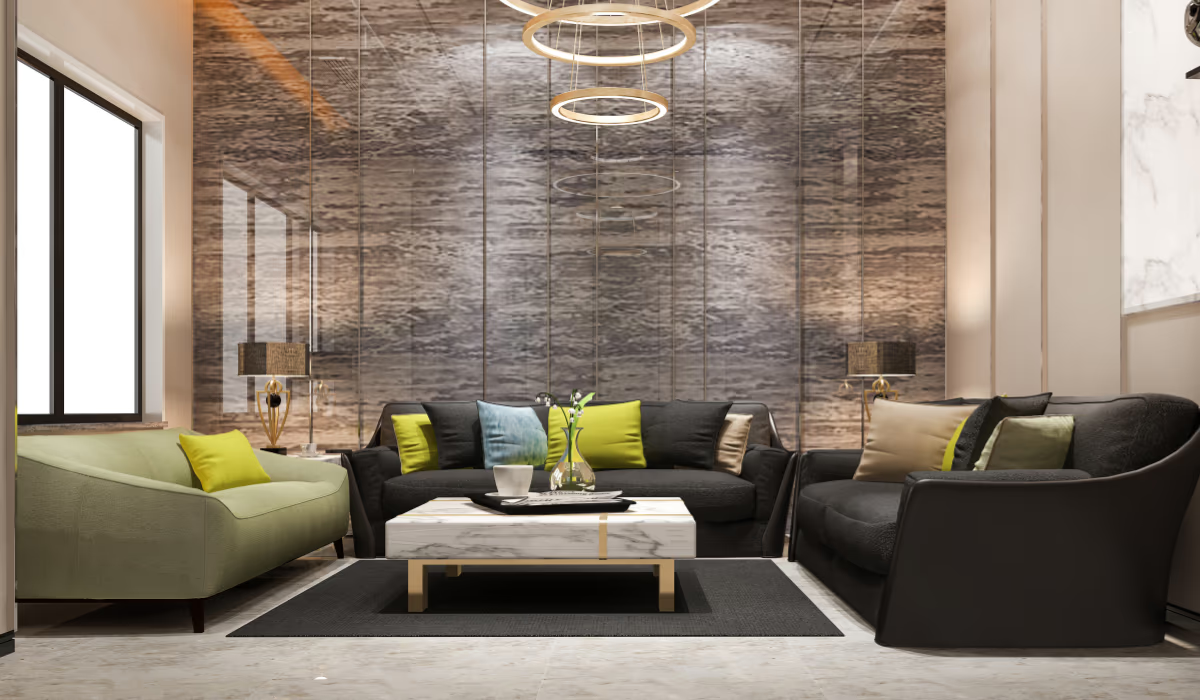Modern interior design is known for its simplicity, functionality, and clean geometry. Yet in many homes it can feel cold or impersonal if not balanced well. To create a truly warm modern interior, you need thoughtful use of materials, colors, light, and furnishings. The following ideas blend sleek modern style with cozy, human comfort.
Open-Concept Layouts & Flow
One defining feature of modern interiors is an open-plan layout, where spaces like kitchen, dining, and living areas flow into each other. This kind of layout amplifies space and light, making a home feel larger and more connected. It also helps avoid clutter and lets décor feel more intentional.
In warm modern design, open layouts are softened by partial dividers, rugs, or furniture arrangements that define zones without breaking continuity. Maintaining consistency in flooring and ceiling treatments across zones helps uphold harmony and avoids visual disjunction.
Layered Lighting
Lighting plays a big role in making modern interiors feel welcoming. Natural light is essential — large windows, minimal window treatments, and well-placed mirrors help daylight penetrate deep into rooms. Complement this with layers of artificial lighting: ambient (ceiling fixtures), task (reading, cooking), and accent (art, architectural features).
Using warm color temperature bulbs and dimmable lights adds flexibility: bright during the day, cozy in evenings. Lighting fixtures with interesting shapes or materials can also double as design statements without overwhelming sleek lines.
Warm Materials & Texture
Materials like wood, stone, rattan, and warm metals (brass, bronze) introduce texture and natural tones that contrast minimalist modern finishes. A wood slat wall, for example, or a stone accent around a fireplace, brings character and warmth. Textiles — wool, linen, soft rugs, cushions — soften hard surfaces and create comfort underfoot.
Mixing matte finishes with subtle gloss helps balance reflections and tones. Even small touches like woven baskets or textured throws make a difference in bridging the gap between modern and cozy.
Organic Modern Style & Biophilic Elements
Blending nature and modern design helps ground interiors. Biophilic design — incorporating plants, natural forms, greenery — adds life and airiness. Indoor trees, living walls, or potted plants in warm modern spaces connect the indoors with nature and soften rigid modern forms.
Organic modern style leans into curves and fluid shapes in furniture and décor. Rounded sofas, curved islands, or furniture with softened edges reduce the strict geometry and bring a gentler, more human scale.
Color & Decorative Statements
While modern design often relies on neutral palettes (white, gray, black, earth tones), warm modern interiors often use pops of color or statement walls to avoid monotony. A moody accent wall, bold wallpaper, or saturated color drenching in a small space adds personality. Metals and mixed finishes introduce visual interest without disrupting minimalism.
Accent pieces, décor, or art that align with the overall palette can act as anchors. Choosing colors that harmonize with natural materials helps maintain coherence.
Conclusion
Modern interior design at its best is not just about minimalism or cold surfaces — it’s about combining clean, functional lines with materials, light, and details that make a space feel alive and lived-in. Through open layouts, layered lighting, warm textures, natural elements, and thoughtful accents, you can achieve a warm modern interior that feels both stylish and inviting.
FAQs
How can I make a modern interior feel warmer without losing its sleek look?
Use materials like wood or stone, introduce soft textiles, and layer lighting with warm tones. Small additions like plants or curves in furniture soften straight lines.
Is it necessary to go fully open-concept to achieve modern interior style?
Not necessarily. You can use partial dividers, visual alignment of flooring, and consistency in color or material to get a modern feel even in homes with smaller or divided spaces.
What colors work best in warm modern interiors?
Neutrals with warm undertones — creams, taupe, warm grays — plus accent colors in muted or saturated tones. Avoid extremely cold or stark whites unless balanced with warm textures.
Can modern interiors include bold patterns or wallpaper?
Yes — especially as accent walls or in smaller doses. Large-scale wallpaper or geometric patterns can add interest without overwhelming the clean foundation.
How important is furniture shape in modern design?
Furniture with clean shapes matters, but furniture with curved or organic lines helps soften spaces. Rounded edges or pieces with both angular and curved forms blend modern with warmth.







